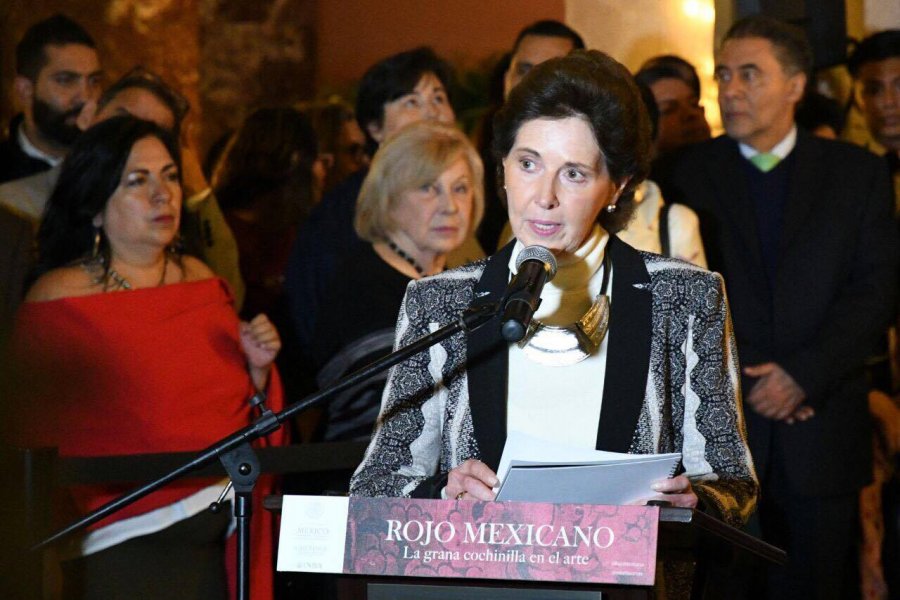Noticias
On view until February 4th 2018
Opening of the exhibition Mexican Red. The carmine cochineal in art
November 10, 2017One of the great contributions of pre-Hispanic Mexico to universal art was evident on the night of Thursday, November 9th with the opening of the exhibition Rojo mexicano. La grana cochinilla en el arte. (Mexican Red. The carmine cochineal in art), at the Museum of the Palace of Fine Arts.
It is made up of 70 pieces from national and international collections such as Van Gogh's Bedroom in Arlés and Tintoretto's The Deposition of Christ, which are presented for the first time in our country.
Secretary of Culture, María Cristina García Cepeda, presided over the opening of this great exhibition, accompanied by Lidia Camacho, general director of INBA; Miguel Fernández Félix, director of the Museum of the Palace of Fine Arts; Gabriela Garza, president of Amigos of the Museum of the Palace of Fine Arts and curator Georges Roque.
María Cristina García Cepeda pointed out that this exhibition brings together the expression of great Western artists who discovered and used, thanks to our ancient cultures, a colour that represents the blood, fire and sun rays. For the Toltecs, the intense carmine meant the red path, the place where the sun had its home, and for the Chontales meant the strength.
With this exhibition, she said, the Department of Culture, through the Museum of the Palace of Fine Arts, confirms its commitment to study and disseminate the legacy of our culture, as well as Mexico's contribution to universal arts, by bringing together great authors who used ancestral red color to give life to pieces that are part of universal iconography.
“This exhibition is the result of the work and dedication of Mexico’s cultural institutions and worldwide; it is a coordinated project with other secretariats of state and state governments that have collaborated to offer the public a tour of works and authors, by times and places, in the luminous trail that a small insect left in art”, added the Secretary of Culture.
Lidia Camacho said that this exhibition will inform the public about the processes that have been carried out for centuries to extract this emblematic pigment that has enriched esthetics in the world.
Curator Georges Roque reminded that in the Florentine Codex, Friar Bernardino de Sahagún mentioned the recipe for preparing the tlacuahuac tlapalli, a name given to the pigment of carmine cochineal mixed with tlalxocotl, a metal salt rich in aluminium and tlaliyac.
During the tour, the public were able to see two emblematic works in this exhibition, Tintoretto's The Deposition of Christ, and Van Gogh's Bedroom in Arlés, where the carmine cochineal takes part to produce the shades of purple that can be seen in the doors and walls, which are opposite to the pure yellow of the chairs and the bed of this last painting.
Also, the following stand out: a piece of furniture made in Pátzcuaro, Michoacán, in the 18th century, with details of carmine cochineal, as well as a lectern from Olinalá, Guerrero, made in 1760 with the same material.
And works such as La Virgen de Guadalupe, by Cristóbal de Villalpando in the17th century and Ecce Homo, by Luis Morales "El Divino", from the 16th century, in which the cape of Christ and the blood of his crown of thorns were made with carmine cochineal.
The exhibition Mexican Red. The carmine cochineal in art is presented until February 4th, 2018 at the Museum of the Palace of Fine Arts.
Mexico,Distrito Federal
